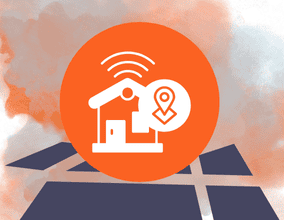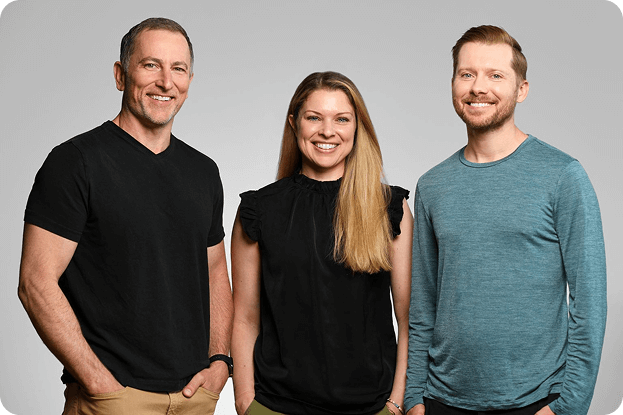If you’re expecting geofencing to single-handedly fill your vacancy, you’re going to be disappointed and probably a little poorer. Used correctly, though, geofencing is a brutally effective upper-funnel amplifier that makes every other channel smarter, cheaper, and faster. Here’s how to deploy it like a pro and measure it like a skeptic.
Geofencing Is Awareness That Converts Later
Think of geofencing as a digital billboard that follows your future residents through the real world: bars, parks, employers, competitor properties. Then it reintroduces itself on their phones and apps. It may not make someone sign a lease from a 320×50 banner while they’re waiting for the weather to load. But it will:
- Build familiarity through repetition. Repeated, relevant exposure hardwires your name so when prospects do start apartment hunting, you’re the name they already know.
- Prime paid search (and everything else). When geofencing runs alongside search and social, your cost per qualified lead drops. In our campaigns, adding geofencing has shaved about $7 off CPA versus comparable mixes without it. Not headline-grabbing on its own, but transformational at scale.
- Extend your footprint. Pair geofencing with Performance Max (PMAX) or paid search to cover Google’s inventory while geofencing reaches people across partner sites and apps you can’t efficiently hit otherwise.
Geofencing is awareness that converts later. Its job is to make the rest of your media mix look brilliant and cost you less.
“Location = intent, not identity.”
The Playbook: Creative, Targeting, & Measurement That Actually Work
Great, geofencing is awareness. Now, how do you make it pull its weight?
1) Creative That Can Survive a 1-Second Stare
Mobile inventory is tight. Your job is clarity, not poetry.
- Use professional imagery. Stage the units and light them well. If your photos aren’t staged and well-lit, you’re donating impressions to your competitors.
- Saying less is better. A 3–5-word headline plus one short supporting line.
- Always include a CTA. Something like: Schedule a Tour, Apply Now, Call Today.
- Lead with a differentiator. Go beyond “1-, 2- & 3-bedrooms available.” Feature the thing that actually moves humans: award-winning service, stand-out amenities, pet policy that doesn’t read like a legal deposition.
Pro tip: Build a creative set (2–4 variations) mixing core brand messages with one amenity “hook” and one service/experience “hook”.
2) Targeting: Hyper-Local, Not Hyper-Creepy
You’re not building a persona, you’re choosing places. That distinction matters for both performance and compliance.
- Start with competitor properties, high-intent venues (employers, transit hubs), and high-traffic culture spots (parks with events, gyms, coffee shops with lines out the door).
- Right-size the radius. We typically start at about 250 meters.
- Budget to let the machine learn. We recommend $200+ per month per campaign to give the algorithm enough runway to prioritize the best fences and inventory.
- Retarget like you mean it. Many people enter a fence while living life, not doom-scrolling. Catch them later when they’re on the couch. Expect meaningfully higher CTR from the retargeting leg and allocate accordingly.
Compliance note: We’re targeting locations, not people. Sensitive locations (like children’s hospitals) are auto-excluded by platforms, and we’re not filtering by income, political lean, or other protected attributes.
Good for results, good for Fair Housing.
3) Paid Media Pairings: Don’t Run Geofencing Alone
Geofencing is the hype man, but you still need the headliner.
- Minimum viable mix: Geofencing + Paid Search + Paid Social = The sweet spot for most properties.
- Low-budget twist: Geofencing + PMAX. PMAX often leans heavily into search placements while geofencing broadens reach off-Google. Two channels, full-funnel coverage.
- More budget? Layer display and CTV where it makes sense. Keep measurement honest.
4) Measurement: Prove It Without Drinking Your Own Kool-Aid
If you judge geofencing solely by last-click conversions, you’ll compromise your overall performance. Measure like a strategist:
- Primary KPI: Cost per Qualified Lead (CPA-QL). Form fills, calls, apply now clicks—actions that hand your leasing team a real shot.
- Watch mix-level efficiency. Compare CPA-QL for Search + Social with vs. without geofencing. You should see that about $7 delta in geofencing’s favor over time.
- Retargeting lift. Expect higher CTR and better downstream engagement from the retargeted cohort. If you don’t see it, your creativity or fences are off.
- “Walk-ins” = bonus metric, not gospel. Matchback to on-site presence can be inflated in dense urban cores (lots of pass-through traffic near leasing offices). Treat it as corroboration, not the One True Attribution.
Reporting hygiene:
- Segment results by fence type (competitor vs. lifestyle vs. employer) and device.
- Refresh creative every 6–8 weeks. Fatigue is real; don’t test your audience’s patience.
- Maintain a kill list of underperforming fences (low impression availability, chronically high CPC/low CTR) and replace them monthly.
A Sample Launch Plan (Steal This)
Goal: Fill a 50-unit vacancy over 90 days while lowering CPA-QL across the media mix.
- Budget & Mix
- Geofencing: $1,000/month
- Paid Search: $3,000/month
- Paid Social: $1,500/month (If budget constrained: Geofencing $750 + PMAX $2,500)
- Fences (10–14 to start)
- 4× Competitors within 2 miles
- 3× Employers (within commute radius)
- 3× Lifestyle (park with weekly events, flagship gym, buzzy café)
- Expand or contract radii (100–350m) based on impression availability during week 1–2.
- Creative
- Set A (Brand): “Elevate Your Every Day” + hero unit photography + Schedule a Tour
- Set B (Amenity): Standout amenity (cold plunge, rooftop, co-working) + See Availability
- Set C (Service): “Award-Winning On-Site Team” + resident-experience angle + Apply Now
- Refresh one set at week 6.
- Bidding & Allocation
- Start 60% prospecting / 40% retargeting; shift toward 50/50 if retargeting clearly outperforms.
- Monitor fence-level impression liquidity; add 3–5 new fences by week 3 if needed.
- Measurement Cadence
- Weekly: CTR, spend pacing, fence liquidity, retargeting share.
- Bi-weekly: CPA-QL at the mix level (Search+Social vs. Search+Social+Geo).
- Monthly: Creative rotation, fence kill/add decisions, retargeting window tuning.
Expected outcomes:
- Higher branded search CTR and conversion rate.
- Lower CPA-QL across the entire mix (target: about $7 improvement vs. pre-geo baseline).
- A clear read on which fence categories (competitor vs. lifestyle vs. employer) are pulling their weight.
Geofencing Makes Your Paid Media Perform Better
Geofencing isn’t the hero; it’s the hype machine that makes your heroes (search, PMAX, social) perform better.
Treat it as upper-funnel awareness, execute with tight creative and smart fences, pair it with the right channels, and hold it accountable to mix-level CPA-QL. Do that, and you’ll stop arguing whether geofencing “works” and start wondering why you waited so long to scale it.
Listen to the Full Conversation
This post is just a snapshot of our conversation with Matt Slankard on Digible Dudes: Riffing with Reid. To dive deeper into geofencing, catch the full episode on:
🎧 Spotify | 🎧 Apple Podcasts | ▶️ YouTube
Hit follow so you don’t miss future episodes that unpack the challenges and opportunities in multifamily marketing!









